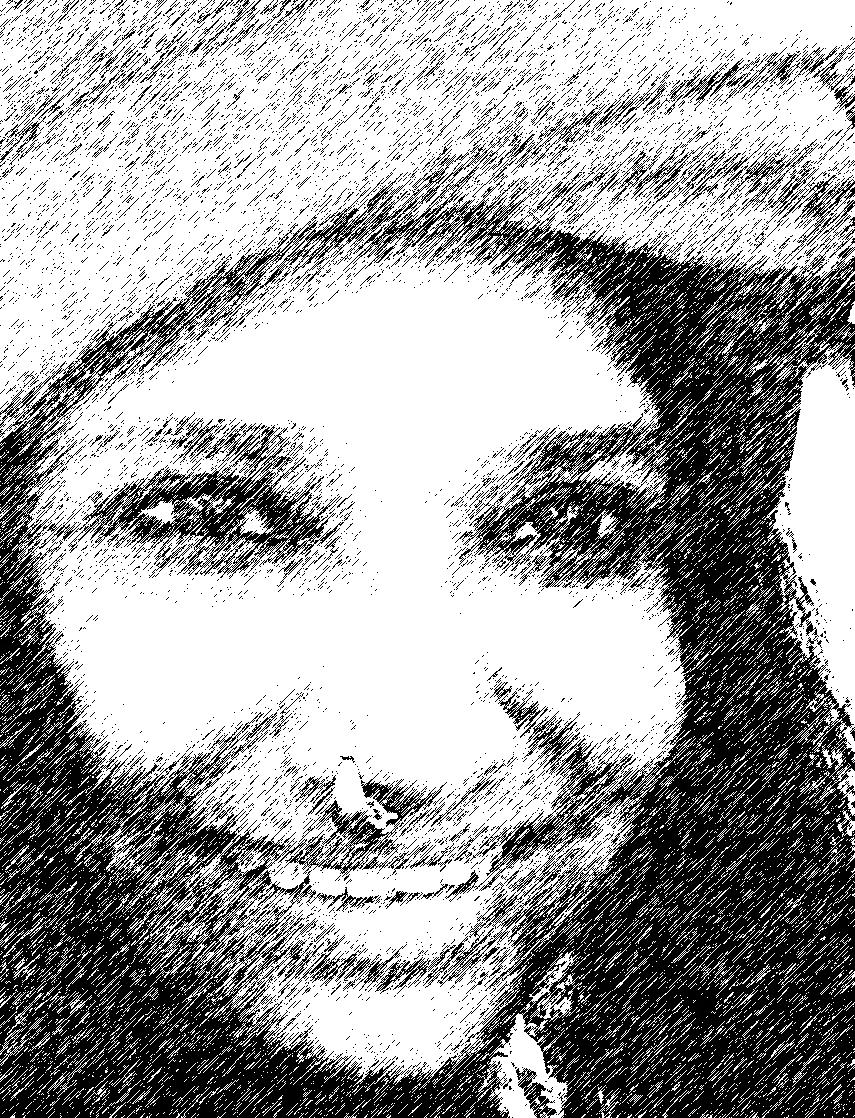
6 minute read
papia ghoshal
artist nomad performer poet rain-bird
papia ghoshal bohemian
Advertisement
Papia Ghoshal, bohemian By Martin Bradley
Papia Ghoshal (popularly known as Papia Das Baul) is a bohemian, if not by birth then by choice.
This free spirited mystic woman lives in the capital of what was Bohemia – Prague, as well as in her birth country India (Kolkata), and in Britain too.
Her life is one crammed with creativity, poetry, fine art, film-making, acting, performance, music and singing. In Prague, she has formed ‘Baishnav Tantra’ an Indian folk music group dedicated to rare original traditional ethnic Indian music, which is no surprise considering her studies in Indian classical music, Rabindra sangeet/folk music, and her Master’s degree in Indian music, and yet is still very much a bohemian in outlook.
What is it to be a ‘bohemian’? Aside from residence in what was Bohemia (now Czechia, formerly Czechoslovakia with Bohemia in the west, Moravia in the east, and Silesia in the north), being a bohemian has become a badge of separation from the ‘norms’ of ‘normal’ society.
Bohemianism, in popular parlance, is a result of the practice of an unconventional lifestyle. A bohemian lifestyle frequently involves music, art and literature and all that entails. It is argued that bohemians are nomadic, wanderers who seek notions of the spiritual. Those (bohemian) traits have been projected onto artists, poets, writers and salonists (gallerists) in places like Paris, during the 1830s and into the first decades of the 20th century. People such as the writer and poet Guillaume Apollinaire; the artist Amedeo Modigliani; the poet, artist and filmmaker Jean Cocteau; fellow artists Henri Matisse and Pablo Picasso; writers Ernest Hemingway and F. Scott Fitzgerald, and salonist Gertrude Stein all became associated with the unconventional bohemian lifestyle.
Later bohemian was applied to the residents of sections of New York’s ‘Latin Quarter’ (at Charles Pfaff’s beer cellar), and literary salons across Manhattan. This was possibly due to the popularity of Fitz-James O’Brien’s short story - “The Bohemian” in Harper’s Magazine (1855). Later, bohemian was applied to London too, with the ‘Bloomsbury Set’ (Virginia Woolf; E.M. Forster; Vanessa Bell; G.
E. Moore; Roger Fry; Lytton Strachey; Clive Bell; Leonard Woolf; Sir Desmond McCarthy, and Arthur David Waley. After the First World war, bohemian was applied to North America’s Greenwich Village’s inhabitants, later to the post World War 2 ‘Beat Generation’ of Allen Ginsberg, Lawrence Ferlinghetti, Jack Kerouac et al (the ‘hipsters’), and in the 1960s to the San Francisco ‘hippies’.
The term “bohemian” has been likened to ‘gypsy’, mainly due to the lifestyle of gypsies (from Bohemia) settling in Paris. It is said that in the country known as Bohemia (Central Europe, a kingdom in the Holy Roman Empire) Ferdinand I (1545), King of Bohemia had banned gypsies (artistic and creative wanderers originally from the North West of India), and in 1697 Emperor Leopold I, King of Bohemia was to do the same. Having few places to stay in Europe the gypsies or Romani (Roma) tried and tried again to make a home in Bohemia. In the 1760s (in Hungary and Transylvania), Empress Maria Theresa began aiding gypsies to settle, and was continued by her son Joseph II (17801790) particularly in Moravia.
Henry Mugger in his book ‘Scenes de la Vie de Boheme’ (Bohemians of the Latin Quarter, 1851, the basis for Puccini’s 1896 opera “La Boheme”) was very keen to distance the Parisian bohemians from the settled gypsies. Mugger wrote…
“The Bohemians of whom it is a question in this book have no connection with the Bohemians whom melodramatists have rendered synonymous with robbers and assassins. Neither are they recruited from among the dancing-bear leaders, sword swallowers, gilt watchguard vendors, street lottery keepers and a thousand other vague and mysterious professionals whose main business is to have no business at all, and who are always ready to turn their hands to anything except good.” (Henri Murger. “Bohemians of the Latin Quarter.”
Just as the term bohemian is a misnomer so, in fact, is ‘Gypsy’.
As wanderers, the peoples who often call themselves Roma, or Romani became objectified by various names including ‘Tartars’, ‘Heathens’, ‘Saracens’, ‘Greeks’, ‘Turks’, ‘Jews’, ‘Jats’, ‘Athingani’, ‘Atzinganoi’, ‘Romiti’, ‘Bohemians’, “Fools Styled Greek Bohemians,” ‘Pharaoh’s People’, ‘Egyptians’, ‘Luri’, ‘Zingari’, ‘Zigeuner’, and ‘Zotts’. The name ‘Egyptians’ became shortened to ‘Gypsies’. But while Gypsies may be bohemians, yet bohemians are not necessarily
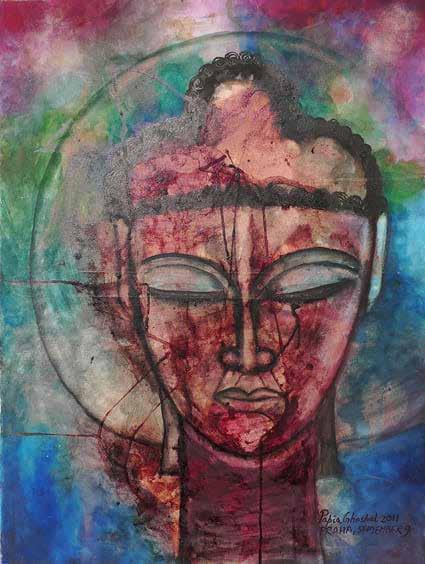
Injured siddhartha
The cracked mirror
The cracked mirror talks only about striving.
Your face striving Your breasts striving Your stomach striving Your vagina striving Your eyes striving Your eye-water striving Your heart striving
By standing in front of the mirror, your days of menstruation slip away.
Gypsies.
Nevertheless, while you might intimate that Papia Ghoshal conforms to the eccentricities of the modernist term ‘bohemian’ and, while some consider that there are correlations between ‘bohemians’, ‘Gypsies’ and Baul (such as proposed lifestyle and mode of dress) Papia Ghoshal maybe a bohemian in the loose sense of that term, but though she travels, is not a gypsy but a ‘Baul’. She has adhered herself to ‘Baul’ philosophy (from Bengal, India). She sings songs of Baul and songs emanating from Bengal’s most famous son, Rabindranath Tagore, too.
The colourful (alkhallas) patchwork clothed Baul (derives from the Sanskrit “Batul,” or “vatula” which means mad, or afflicted by the wind) are akin to gypsies and/or bohemians and are itinerant, nomadic, wandering bards/minstrels who frequently perform with the Ektara (a popular simple one stringed musical instrument, Ek-one, Tara-string). They are nonconformists who praise love and dance out of the sheer joy of being alive. Tantrism; Buddhism; Hinduism, Islam and Sufism have all been associated with the Baul of Bengal.
As part of a Baul performing troupe Papia Ghoshal is very much the Baul answer to Janis Joplin (dubbed the Queen of bohemians), with her husky but sensuous vocals and heartfelt facial mannerisms. Dressed in traditional Baul patchwork, red scarf wrapped around her neck, nose ring glittering as she plays and sings, this bohemian painter/ performer/poet enwraps and beguiles her attentive audiences. Often her paintings, originally created using watercolour and menstrual blood in the tantric tradition, are projected behind her though, in truth, she needs no additions to her magnetic self and her pounding musical accompaniment. On stage, she twirls like semazens (Sufic Mevlevis) but unlike those ‘Twirling Dervishes’ she is highly sensuous, a woman grounded in ‘shakti’ and moves as easily as the ophidian (Gerua) who accompanies her in life
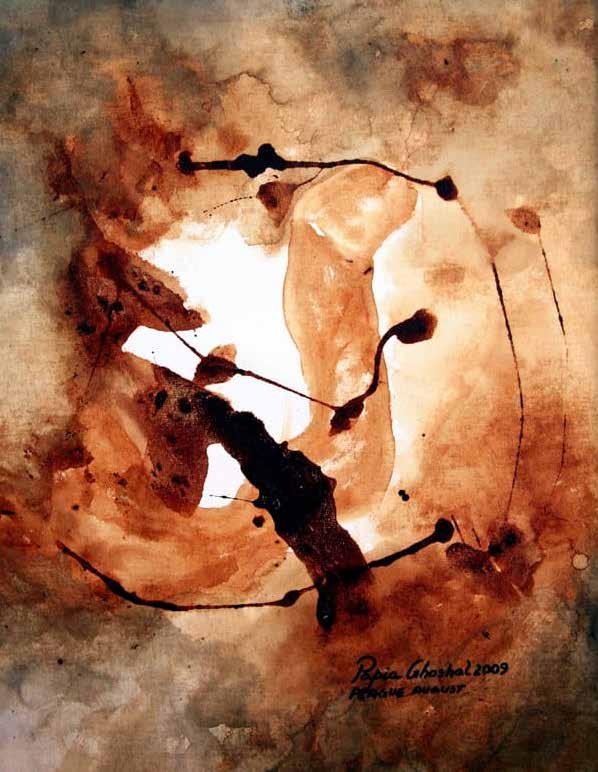
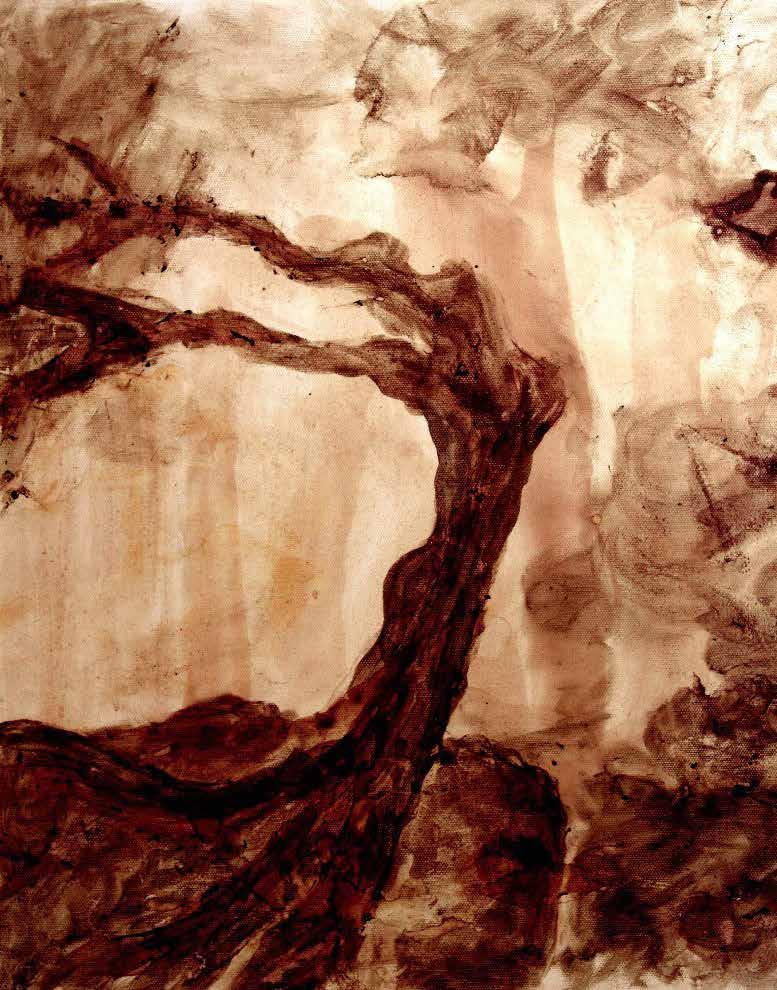
Colours
Our neighbourhood girls will show their nests Made from the white ties of petticoats; Orange orgasms and the menopause Bleed into foot-bands of yellow and black.
Clothes rails shed scarlet bras Onto the neighbourhood’s blue alleys and out into its streets.
Colours drain down every last body.
Little by little the girls in the alleys Shade off into black..
Blind Geometry
The spent blue hue drips down the canvas The brush is falling asleep
One dark arithmetic paves the way
The blind geometry rules
Awake only, the planet that’s next to grammar; And the text books are silent
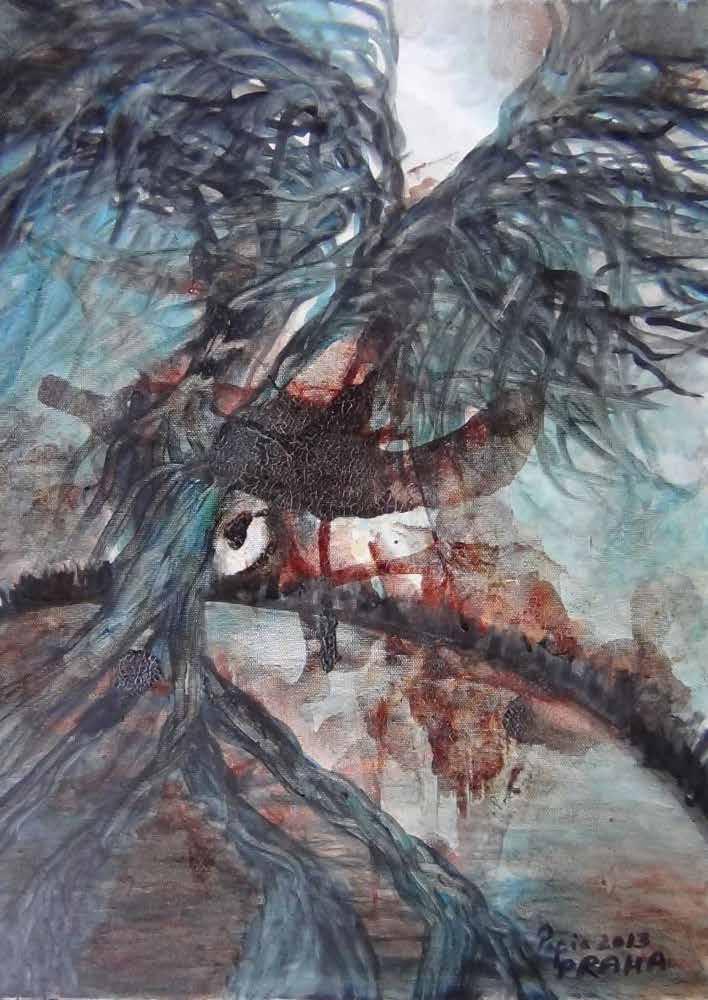
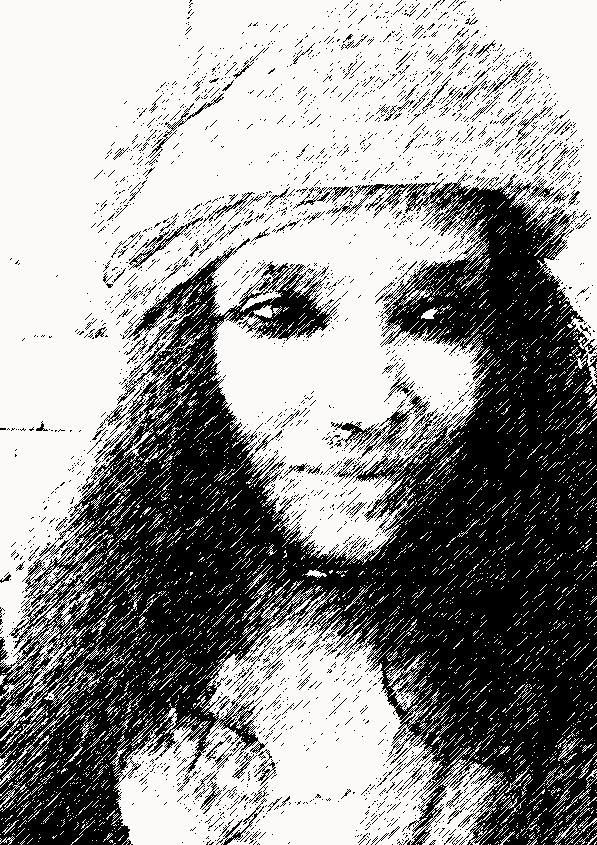
Love
As if we are hacking a path through the darkness, As if we’re engrossed afterall this while by the moon’s refulgence, So long have I borne on my back my corpse As if I will listen once more To the ear-market struggle between grave and allegro, As if after all this while one comes and says
Unknot your hem and run to me.







